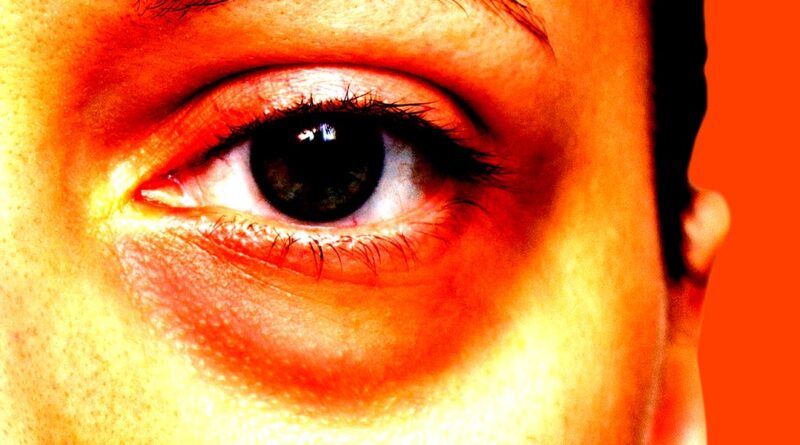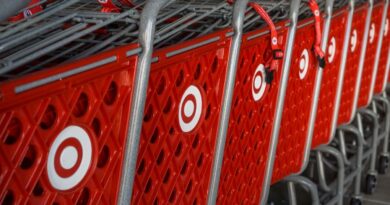Would you spend $5,000 to remove your eye bags?
Two years ago, Emily Gordon began taking note of her under eyes. They’d become increasingly prominent, puffy yet hollow, making her feel like she looked “exhausted” and “old” at just 27.
At first, she thought sleep, paired with a clean diet and proper skincare regimen, was the solution. Regardless of her efforts, though, the bags persisted.
“I’d wake up in the morning, I would see the eye bags, and I would try to avoid mirrors as much as possible,” she said.
That was until Gordon stumbled upon other women with the same eye bags on TikTok. Instead of just venting about them, they were documenting their lower blepharoplasty, a 90-minute, $5,000 procedure to permanently remove excess skin, fat, or muscle in the lower eyelid — also known as their under-eye bags.
Four months later, she got her own bags removed. Now, Gordon loves her appearance — especially her smooth under eyes.
“I have no eye bags, my under-eye area looks great, nice and smooth,” she said. “I just felt on top of the world and just so happy that I decided to do it in the first place.”
Gordon is more than two decades younger than the average blepharoplasty patient, who’s typically in their 50s and 60s, according to recent data from the American Society of Plastic Surgeons (ASPS).
Still, she isn’t an anomaly — Gordon is one of a growing number of women opting for the procedure before turning 30.
“A lot of the patients were 30s, 40s, and older. Now, we are seeing more 20s, 30s,” said Dr. Pradeep Mettu, a North Carolina-based oculofacial plastic surgeon who specializes in the procedure. “There’s no doubt it’s shifted to even younger than it was before.”
Blepharoplasty, or eyelid surgery, is one of the most popular cosmetic procedures in the United States, and it’s only becoming more common. Reports from the ASPS, which use yearly surveys of thousands of board-certified physicians and data from a national plastic-surgery database, reveal the procedure’s frequency rose about 18% from 2019 to 2023 alone.
Although it’s long been a favorite of those over 50 to discreetly address signs of aging, lower blepharoplasty is now growing in popularity among women in their 20s who, like Gordon, are hoping to look more fresh-faced and youthful.
The twentysomething blepharoplasty boom
Smooth, airbrushed undereyes have been en vogue since far before the invention of filters and Facetune. Concealer advertisements from the 1950s even showed models miraculously aging in reverse after the product was applied to camouflage their dark circles.
“We don’t want to look tired, stressed, sad, or vulnerable,” said Dr. Jeffrey Spiegel, a top Boston plastic surgeon. “All these things are read in the eye.”
For many 20-somethings opting for the procedure, their undereyes are congenital — meaning they are essentially “born with eye bags,” said Mettu.
“I see patients commonly in their 20s that tell me ‘I’ve had this my whole life,'” Dr. Ivan Vrcek, a Dallas-based oculoplastic surgeon, said. “It’s not about age, it’s about anatomy. You could be 50 and not have the problem, or you could be 25 and have the problem worse than a 50-year-old.”
Although no amount of eye cream or lasers can counteract the genetics responsible for eye bags, surgery can for many. The option has become increasingly attractive as the pendulum swings away from injectables — filler use increased by just 1% in 2024, according to the ASPS — and toward long-lasting procedures.
This permanence was what drew Gordon to lower blepharoplasty — she wasn’t interested in “Band-Aid” approaches like filler or platelet-rich plasma (PRP) injections.
Both require multiple sessions and thus, payments. Filler can run you anywhere from $500 to $1,500 per syringe, and PRP can range from $500 to $2,000 per session of which providers recommend doing at least three. Meanwhile, the average cost of a lower blepharoplasty can be about $5,100 — and it’s typically a one-time procedure.
In total, Gordon paid $9,500 all-in for her lower blepharoplasty (nearly $900 was for the general anesthesia, under which most surgeons perform the procedure), which she paired with a CO2 laser to tighten and a fat transfer to plump the area — a number that, while high to some, made sense to her.
Emily Gordon
“I was like, ‘Oh my gosh, that’s a lot of money,'” said Gordon. “But if I were to consider if I did under-eye filler and I would get it touched up once a year for the rest of my life, that, to me, sounded like way more money than doing a surgery.”
Plus, because the procedure is often done transconjunctivally (meaning the incision is made inside the eyelid), patients typically experience bruising and slight swelling, but no visible scarring, and pain that is often manageable with over-the-counter medications and ice.
Immediately after her procedure, besides a haze from the anesthesia, Gordon said she felt “zero pain.” “Even the next couple days, I had no pain on my face, which most people are shocked to hear.”
Most patients are back to work in a week, said Vrcek.
“Oftentimes, it’s impossible to tell that someone actually had the blepharoplasty,” said Chicago-based oculofacial plastic surgeon Dr. Paul Phelps.
Lower blepharoplasty’s new demographic
Vrcek said lower blepharoplasty’s popularity has “exploded” in his practice within the past five years. Of the 12 lower blepharoplasties he averages each week, he estimates that half are done on women in their 20s and 30s.
Spiegel, a top Boston plastic surgeon, added that he’d seen five patients under the age of 30 for blepharoplasty consultations recently.
Mettu said he’s seeing a lot more lower-blepharoplasty patients between the ages of 20 and 29 than he has in the past two years — and his youngest is a 20-year-old who traveled to him for this procedure in June.
“It is kind of an old-school mindset of, ‘This person is too young for surgery,'” said Mettu. “As long as someone’s 18 and older, and is cognitively able to have an informed discussion … then I think if they’re a good candidate, surgery is reasonable.”
Lower blepharoplasty’s rising popularity is partially thanks to the social media content being posted about it. Gordon’s videos on her surgery, for example, have over 7 million views.
In 2024, then-28-year-old influencer Madeline White chronicled her experience in several videos, which have garnered almost 14 million views. And since being posted in January, 26-year-old content creator Jas Anahis‘s videos about her lower blepharoplasty, done by Mettu, have been viewed over 11 million times.
Mettu said he received over 10 consultation requests within 24 hours of Anahis’s first video being posted, then more in the weeks that followed.
“Many young people didn’t realize that lower blepharoplasty was an option for them,” he said. “When a popular video comes up, or a transformation video, people see that and they realize what’s possible.”
One of those women was 27-year-old Sugelly Machado. In March, she drove from Connecticut to North Carolina for her lower blepharoplasty with Mettu after coming across Anahis’s videos while researching the procedure.
“I don’t see it as plastic surgery. I just see it as an enhancement.”Sugelly Machado, who got a lower blepharoplasty at 27
“I was like, ‘I’m getting it,'” Machado said after seeing her video. “There was no doubt in my mind.”
Machado’s eye bags were genetic, and given her age, she knew she didn’t want to wait another 20 years to address them.
Despite being confident, she said they were her only insecurity. Pre-surgery, she recalls rarely leaving the house without fake lashes or posting on social media without a filter to hide them.
“My friends would always be like, ‘Oh, your eyes are so puffy,’ or ‘You look so tired,'” Machado said. “And I’m like, ‘I’m not tired. I got eight hours of sleep. I don’t know what to tell you.'”
Sugelly Machado
Now, three months post-op, Machado has zero regrets.
“I can leave the house without putting on makeup,” she said. “I genuinely feel beautiful.”
Machado also shared her blepharoplasty experience on her TikTok account. A video of her before-and-after garnered more than 1.4 million views, and many commenters looked for the details of what she had done.
And although she said her goal is never to convince any of her followers to get surgery, sharing the details of her lower blepharoplasty felt different.
“I don’t see it as plastic surgery,” she said. “I just see it as an enhancement.”
Our eyes matter — a lot
The amount of time spent looking at ourselves — in real life and online — is another motivator for these women, said Spiegel.
This was the case for 30-year-old Kiana Robinson, who, despite first noticing her “puffy” eye bags back in 2017, hadn’t considered surgery until she started working a remote job that required frequent video calls.
“I was in a very high-demand job,” she said, “and I feel like people were like, ‘Are you OK?’ ‘Have you been crying all night?'”
When eye creams and heavy hydration didn’t minimize the appearance of her eye bags, Robinson went to Mettu to ask about filler. He suggested lower blepharoplasty instead.
She had it done in April. Three months after her surgery, Robinson describes the mental and physical difference as “night and day.”
“When you see that change, you feel younger,” she said. “Perception-wise, you feel healthier.”
It’s no surprise Robinson feels this way — eyes are one of the first areas of the face to show signs of aging.
Eye bags rarely shrink with age (or a daily-use serum), and this is especially true for congenital ones, which can worsen with age.
Pradeep Mettu, MD and Raleigh Eye and Face Plastic Surgery
“I’m not going to be miserable for 30 years and then determine, ‘Maybe I’ll look into it,” Machado said about her decision to get the procedure in her 20s. “I feel like if the ladies in their 50s had all the resources that we had, they would have done it in their 20s as well.”
Although younger patients are increasingly showing up for consultations, surgeons note they aren’t always agreeing to perform the procedure.
“I spend a lot of time telling people, ‘You look good, you look normal, you are healthy,'” said Spiegel. “‘Ignore what you’re seeing online.'”
Given the sensitive nature of eyes and their functionality, lower blepharoplasty carries inherent risks — including dry eye and vision changes — which is why surgeons urge prospective patients to do their research.
It’s also important to rule out potential health issues, like sleep apnea or allergies, which can contribute to prominent eye bags.
“People need to be aware that those underlying issues and self-confidence are things that should be worked on in conjunction, and not hanging their whole hat on surgery,” Phelps said.
Though the procedure has been known to promise long-term results, Phelps also cautions that, as with any surgery, people should be aware of how they’re treating their body afterward.
For the first two weeks, surgeons typically recommend avoiding strenuous physical activity, alcohol consumption, and makeup.
“If you don’t take care of your body, you may have a problem with longevity,” Phelps said. “But for a person who’s taking good care, as they should be, it should last basically forever.”
Now 29, Gordon is in the midst of planning her 2026 nuptials — an event she is happy to have gotten her surgery done before.
“I’m not going to be nervous about my wedding pictures or how my bags look,” she said. “Now I’m thinking about a boob job, but that’s a different story.”





